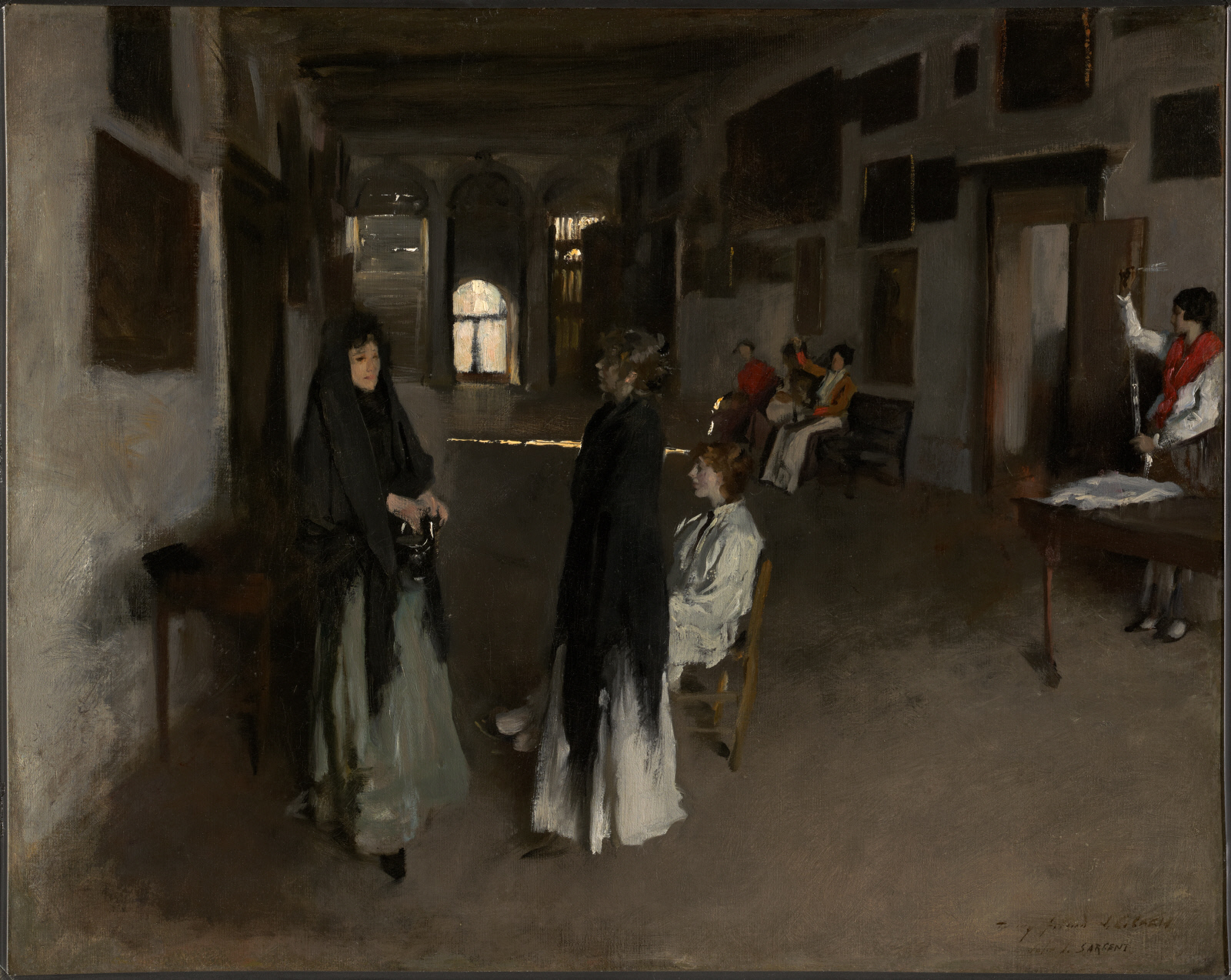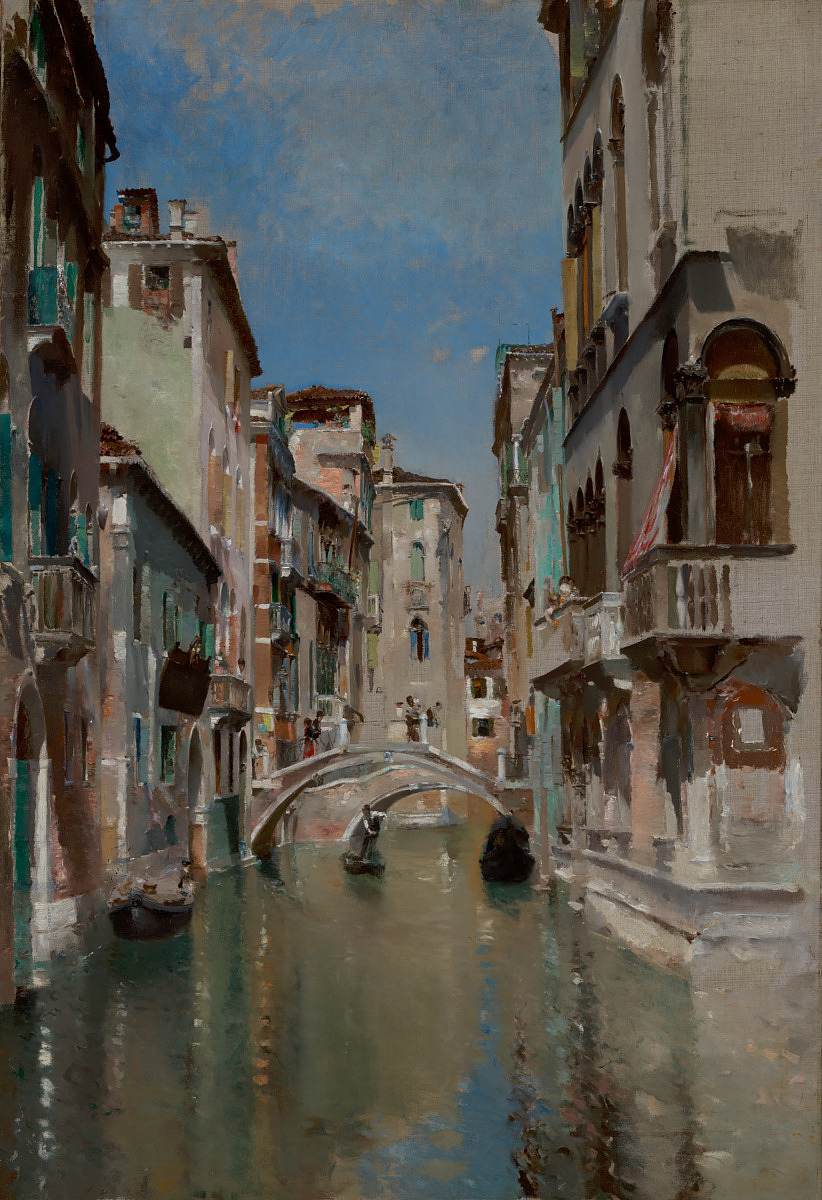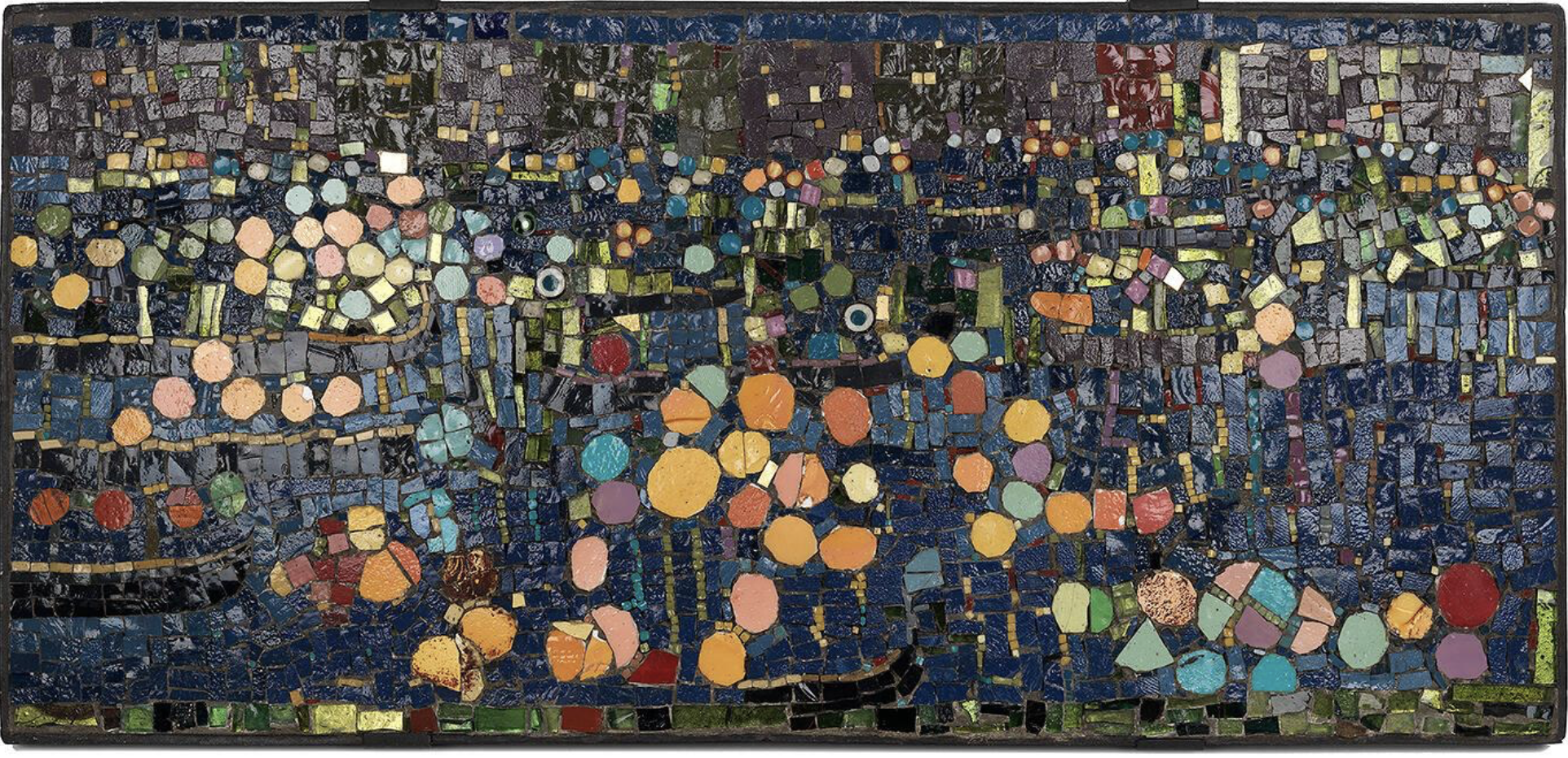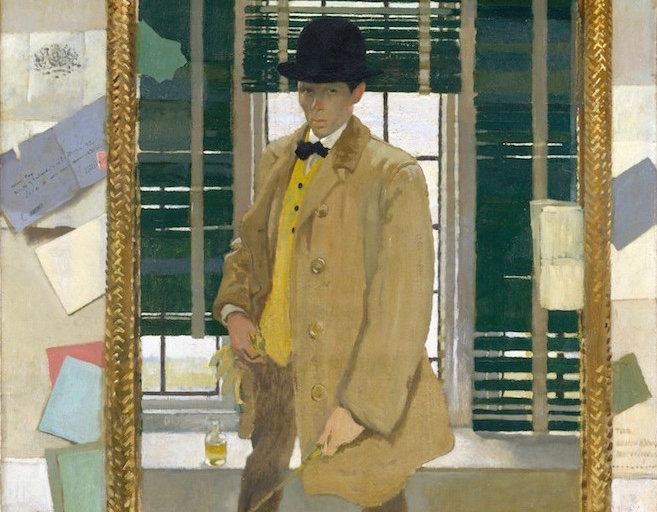
For some years, my favorite book on John Singer Sargent was one that featured paintings chronicling his travels overseas, because they were the works done for pleasure rather than money. Or, if you like, products of the artist’s truer nature as opposed to those produced with an audience in mind. I’m suggesting the application of a Zen principle, of not trying to “make” a work of art, which I first read about as an adolescent, hungrily poring over the dialogue of the precocious Glass family in J.D. Salinger’s books. In Raise High the Roof Beam, Carpenters, Seymour writes to Buddy, “I’m positive tonight that all ‘good’ literary advice is just Louis Bouilh and Max Du Camp wishing Madame Bovary on Flaubert. All right, so between the two of them, with their exquisite taste, they got him to write a masterpiece. They killed his chances of ever writing his heart out. He died like a celebrity.”
Sargent was a celebrity, essentially a public figure his entire life. The same was true for Whistler, though his natural combativeness acted as a shield against the corrosive effects of patronage. They arrived in Venice under different circumstances: Sargent as a prodigy, ascendant in his mid-twenties, Whistler having just suffered a well-publicized humiliation in middle-age. For both, Venice provided an escape from the pressures of London and Paris, and offered a more relaxed atmosphere for creative experimentation. What unites their Venetian work is an unforced intimacy, particularly in the genre scenes. Whether engaged in labor or in repose, the men and women in Whistler’s etchings and Sargent’s oils conduct themselves unselfconsciously and appear to exist naturally in their environments. Most of Whistler’s Venetian production was etching or pastel, most of Sargent’s, relatively small oils, and have thus been relegated to sidebar status. Yet there is a subtlety of expression in their Venice work that neither artist ever surpassed.
A selection of these works headlined the recent exhibition, Sargent, Whistler, & Venetian Glass: American Artists and the Magic of Murano, which originated at the Smithsonian and just closed at the Mystic Seaport Museum. The exhibition was nicely assembled, with plenty of remarkable glasswork that I fairly breezed past, though my partner volunteered that some of the ornate pieces made her shudder in appreciation of their fragility. Of my own disinterest, I offer no excuse other than willful ignorance, and my hunch that, artisanal culture aside, what most interested the American artists who visited Venice was the architecture and its proximity to the sea. This much has been evident at least since Canaletto.

At Mystic, one was first greeted by Sargent’s Corner of the Church of San Stae, hung adjacent to Robert Blum’s Canal in Venice, San Trovaso Quarter, both luminous paeans to the local stonework. Blum, originally from Cincinnati, lived in Venice in the mid-1880s and spent his last years teaching at the Art Students League of New York. He was also represented in Mystic by one of his most ambitious canvases, Venetian Lacemakers, an elaborate interior of hyper-naturalistic color, the young craftswomen a little too dressed up and happy at their job. Other works told of even more strenuous efforts by the artists. One is aware of the heavy lifting in Frank Duveneck’s Water Carriers, Venice, a large studio piece that also ennobled the city’s working class; its heart is in the right place, though the intuitive genius of Duveneck’s youth had passed. Like Blum, Duveneck was a Cincinnati-born artist of German descent who taught at the League. Yet another League instructor, Kenyon Cox, was included with a preparatory study for the mural, Venice, classically crafted and utterly workmanlike. Cox, by the way, was a Cincinnati schoolmate of Blum. The number of artists from southwest Ohio who went to Italy at the same time and ended up teaching at the League strains credibility.
The vogue for Venice in the second half of the nineteenth century was ignited by The Stones of Venice, an architectural treatise by John Ruskin. Ruskin’s influence on artists here and abroad manifested in a moralistic fidelity to nature, whose echoes would be felt for generations, in works such as Charles Caryl Coleman’s The Bronze Horses of San Marco. Its rooftop view is a marvelous idea, undermined by a blandly naturalistic palette and tiresome execution. One wished for the selectivity of Sickert’s hand, regrettably absent from the show by virtue of nationality (his L’Ospedale Civile, Venice, is an hour away at the Yale Center for British Art in New Haven).

But we have Sickert’s mentor, Whistler, who upon finding one of Ruskin’s protégés painting an enormous, detailed canvas in St. Mark’s Square, is said to have pinned a note on his back reading “I am totally blind.” Ruskin was indirectly responsible for Whistler’s trip to Venice in 1879–bankrupted by a libel suit he brought against Ruskin for a slanderous review, the artist accepted a commission from the Fine Arts Society in London to make a dozen etchings of the city. He was enchanted less by Venice’s traditional sites than its backwaters, writing, “I have learned to know a Venice in Venice that others never seem to have perceived….” His etchings, including The Doorway, (First Venice Set), Nocturne: Furnace (Second Venice Set), Bead Stringers (Second Venice Set) and The Venetian Mast (First Venice Set) attest to his talent for balancing detail and economy, the foundation of his mastery as a printmaker. The stay in Venice extended from the planned three months to fourteen. It resuscitated his career, and was important for its effect on a circle of visiting artists. Alas, perhaps owing to their delicacy, none of his Venetian pastels were on display; this was the exhibition’s most glaring omission. Instead, there was the engaging and grandiloquent full-length portrait by Boldini, true to the subject’s nervous energy if anatomically generous, given Whistler’s actual diminutive stature. That said, I didn’t mind its histrionics as much as I’d expected, and the charcoal colored suit has a velvet simplicity worthy of Zorn.
If Whistler was underrepresented, Sargent received his due. Installed across the gallery, his A Venetian Woman would have shown well alongside Boldini’s portrait of Whistler, and given that it’s a life-size portrait of an artist’s model rather than a prominent subject, puts Sargent as close as he ever got to Manet. Yet it’s the intimate genre scenes that win the day, finding an understated tension between narrative and design. In The Sulphur Match, the indolent protagonists remain anonymous enough to allow admiration for the virtuosity of the painting. Better still are Leaving Church, Campo San Canciano, Venice and A Venetian Interior, the latter a trifle busy, yet succeeding in an authenticity that Blum’s Venetian Lacemakers lacks. As its architecture and canals had previously inspired landscape painters, a new generation of artists found in Venice an opportunity to safely venture beyond their conventional atelier training, where models occasionally adopted romantic personae, and put their academic skills to use in front of the real thing.
The real thing? Venice is a city constructed on artifice. Its annual carnival is a giant masquerade party. More poignantly, it is a city whose buildings and bridges carry the pretense of permanence, while ever threatened by inevitable disappearance beneath the Adriatic Sea. Two hundred years ago, it was assumed that its destruction by water was imminent, and every artist who has traveled there since has transcribed images of its transitory grandeur, with an at least tacit understanding that this, too, shall pass. Glass art is the ideal symbol for a place whose very existence is as evanescent as sea smoke.

No artist better conjured Venice’s festive artifice than did Maurice Prendergast. His Venice, usually depicted in watercolor, is a lively place. The dots, dashes and puddles of pigment are arranged into recognizable patterns of crowded walkways, claustrophobic facades, graceful arches and dappled water. In Mystic, Prendergast had two works, an oil and a mosaic. Ponte della Paglia initially dates from Prendergast’s first visit to Venice in 1898, and was reworked in 1922. Based on a watercolor, it is a quintessential work, comprised of colorfully clothed women on the Riva degli Schiavoni and banners animated by a breeze, enclosed by a row of buildings across the lagoon. Fiesta Grand Canal, Venice, is the intersection of the exhibition’s twin themes, a painting realized in a mosaic of glass and ceramic. Much of the painting and graphic art in Sargent, Whistler, & Venetian Glass was an exploration of visual facts, postcards to be shipped back home. Prendergast’s vision, a triumph of chromatic fantasy, was the most beguiling correspondence of all. One has the distinct impression that, as in the best work here, he wasn’t trying to paint a masterpiece, but was merely painting his heart out.




